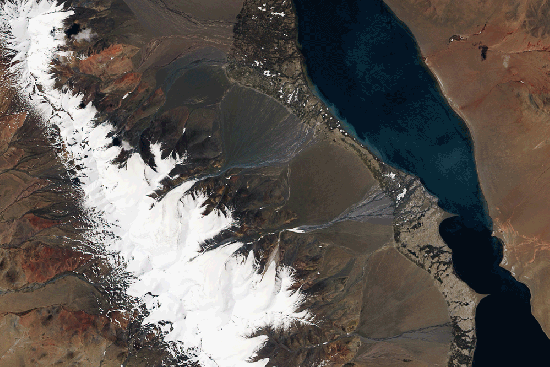
Before and after images taken by a satellite illustrate the scale of the damage
Climate change may be to blame for a 2,500-acre ice avalanche this summer that ranks as one of the largest ever recorded, scientists say.
The avalanche killed nine people in Tibet and decimated the village of Dungru’s livestock as 3,500 cubic feet of ice and rocks crashed into a valley. The only avalanche of comparable scale in recorded history occurred in the Caucasus Mountains in 2002, according to a Nature report. That incident left 140 people dead.
The exact cause of this year’s massive avalanche remains uncertain. Indeed, scientists say the glacier collapse of this magnitude is highly unusual given that the area where the collapse began is flat. But scientists believe that warm temperatures or precipitation may have loosened the ice and caused the sheet to deteriorate. Both warm temperatures and rainfall have been linked to man-made global warming.
Before and after images taken by a European Space Agency satellite illustrate the scale of the damage.